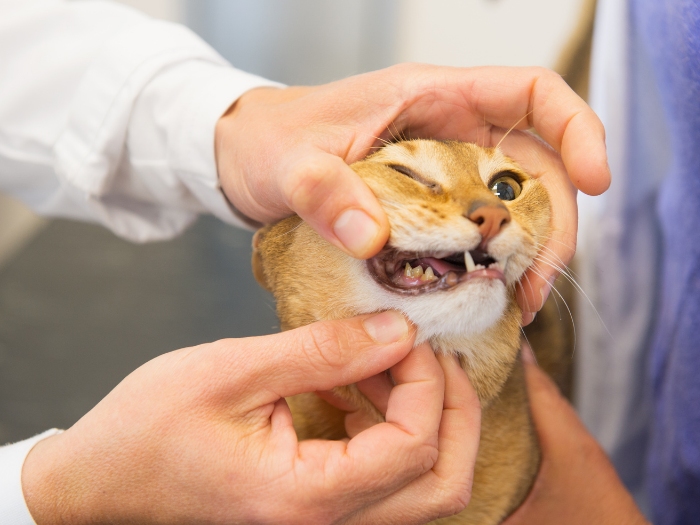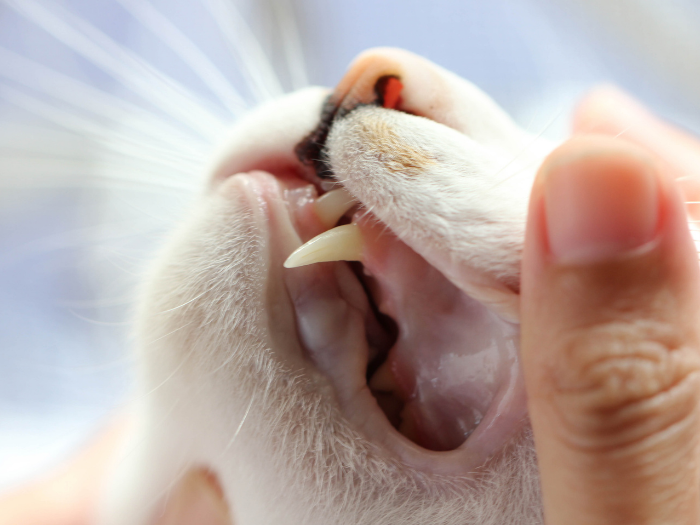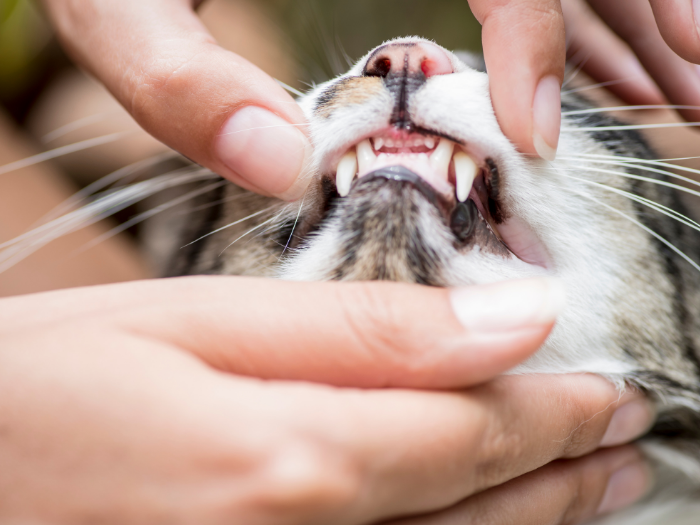What Color Are Healthy Cat Gums?
Checking for healthy cat gums is a big part of keeping up with your cat’s dental care and overall health. The color and state of your cat’s gums can be indicators of underlying health issues, so you will want to check them on a regular basis to make sure they are staying healthy. Cats are masters of masking any pain or health issues, so it’s extra important to monitor your cat and check their teeth and gums.Being aware and staying on top of your cat’s gum health will help you avoid more expensive and painful issues later on down the road. When or if you do notice something out of the ordinary with your cat’s gums, you should schedule an appointment with your veterinarian to get the problem treated early on.
Appearance of Healthy Cat Gums
If you’ve never inspected a cat’s mouth before, you may not know what healthy cat gums look like or even how to check your cat’s gums. That’s okay!How to check your cat’s gums (it takes practice for both you and your cat):
- Tip your cat’s head back
- Put your hand over your cat’s head and use your thumb to pull back your cat’s mouth
- You can use the same thumb to pull back your cat’s upper lip
- Use your other hand to pull down your cat’s bottom lip
- Repeat on the other side
- To check the inside of your cat’s mouth, use your thumb and index finger to open your cat’s mouth from the sides
In general, your cat’s gums should be pink in color – not too dark and not too light. There are obviously different shades of pink, so it’s important to know what is normal for your cat so you have a baseline for comparison.There should not be any redness around the gumline where your cat’s teeth and gums meet, nor should there be any signs of sores, lesions, redness, swelling, or bleeding.There are some exceptions to the natural pink gum color. Some cats are actually born with black gums, and some even have black spots on their gums and lips (like “freckles”). Black gums can also be a sign of an issue though, so again, it’s important to know what your own cat’s normal gum color is.
Signs of Unhealthy Cat Gums
As mentioned, sores, lesions, swelling, bleeding, and discoloration are all signs of unhealthy cat gums. Pale, white, black, red, blue/purple, and yellow cat gums are indicators of different health issues. If you notice your cat’s gums are discolored, you should see your veterinarian for diagnosis and treatment.
Pale Cat Gums / White Cat Gums
If you notice pale cat gums, it can signal your cat is dehydrated. You can press on your cat’s gums to confirm this (called a capillary refill test). If the color doesn’t return to the gum almost immediately, it means your cat is dehydrated or has some other issue going on and should see a veterinarian right away.Pale cat gums are also a sign of anemia. If the cat gums are white, it can indicate severe anemia, blood loss, or shock. Your cat should get medical attention right away if your cat’s gums turn extremely pale or white.
Black Cat Gums
As mentioned, some cats (usually black cats) have naturally black cat gums, and some (usually orange, calico, or tortie cats) may have black spots on their gums and lips. The black spots are due to lentigo simplex, which is a benign condition that is genetic and harmless – it’s basically feline freckles.However, if the black spots are raised and painful and/or accompanied by bad breath or bleeding, they can be a sign of gum disease or cancer.
Red Cat Gums
If cat gums are red, it can indicate a high temperature, heatstroke, illness, or toxicity. If the redness surrounds the teeth or is along the gum line, it is a sign of dental health issues such as gingivitis. Red and inflamed gums can also be a sign of stomatitis.Your cat should of course see a veterinarian for any of these issues, but if you suspect your cat is suffering from a high temperature, heatstroke, or toxicity, you need to get your cat to the vet immediately.
Yellow Cat Gums
Yellow tinged cat gums are a sign of organ problems, such as liver disease. Yellow cat gums indicate jaundice and may be accompanied by yellow discoloration of your cat’s skin, eyes, and ears. Take your cat to your veterinarian right away if you notice any of these symptoms.
Blue/Purple Cat Gums
Cat gums that are blue or purple in color indicate poor blood circulation and/or a lack of oxygen. Heart disease, cancer, kidney disease, liver disease, poisoning, and shock are all possible causes. Take your cat to a veterinarian immediately if you notice blue or purple gums.
How to Keep Your Cat’s Gums Healthy
Your cat’s dental health directly affects their gum health, which is why proper cat dental care is extremely important. If your cat’s teeth and mouth are well-maintained, you can help prevent gum issues and diseases such as gingivitis, stomatitis, and periodontitis, which can then help prevent further health issues such as heart, kidney, and liver diseases.In addition to regular dental/gum checks, there are several ways you can support your cat’s dental health at home:
- Brush your cat’s teeth
- Use cat dental wipes
- Feed your cat dental treats
- Give your cat dental chews and/or sticks
- Add a dental additive to your cat’s water
Your cat’s dental health is one of the five vital stats that we encourage you to monitor. Join us in our Pet Health 5 movement, and together we can start tracking our pet’s health. All it takes is 5 minutes of your time, and we’ll even send you a reminder on the 5th of each month with a checklist of what to do and how to do it.Start today by checking your cat’s teeth and gums and signing up for Pet Health 5.
As you can probably tell by now, your cat’s gums can give you great insight into their overall health – not just their dental health. Healthy cat gums = happy and healthy cat! Regularly checking your cat’s gums can help you to catch any issues early and seek treatment when necessary, before things progress even more.Do you currently check your cat’s gums and record your findings regularly? About the Author: Emily is “mom” to seven cats, one dog, and two sugar gliders. She has been writing in the pet industry for over 8 years, with a focus on cats, rescue, and adventuring. When she isn’t writing, playing music, crocheting, or working on her own entrepreneurial pursuits, Emily and her husband enjoy hiking, road-tripping, camping, and canoeing with their three cat adventurers. Follow her on her blog, KittyCatGo.